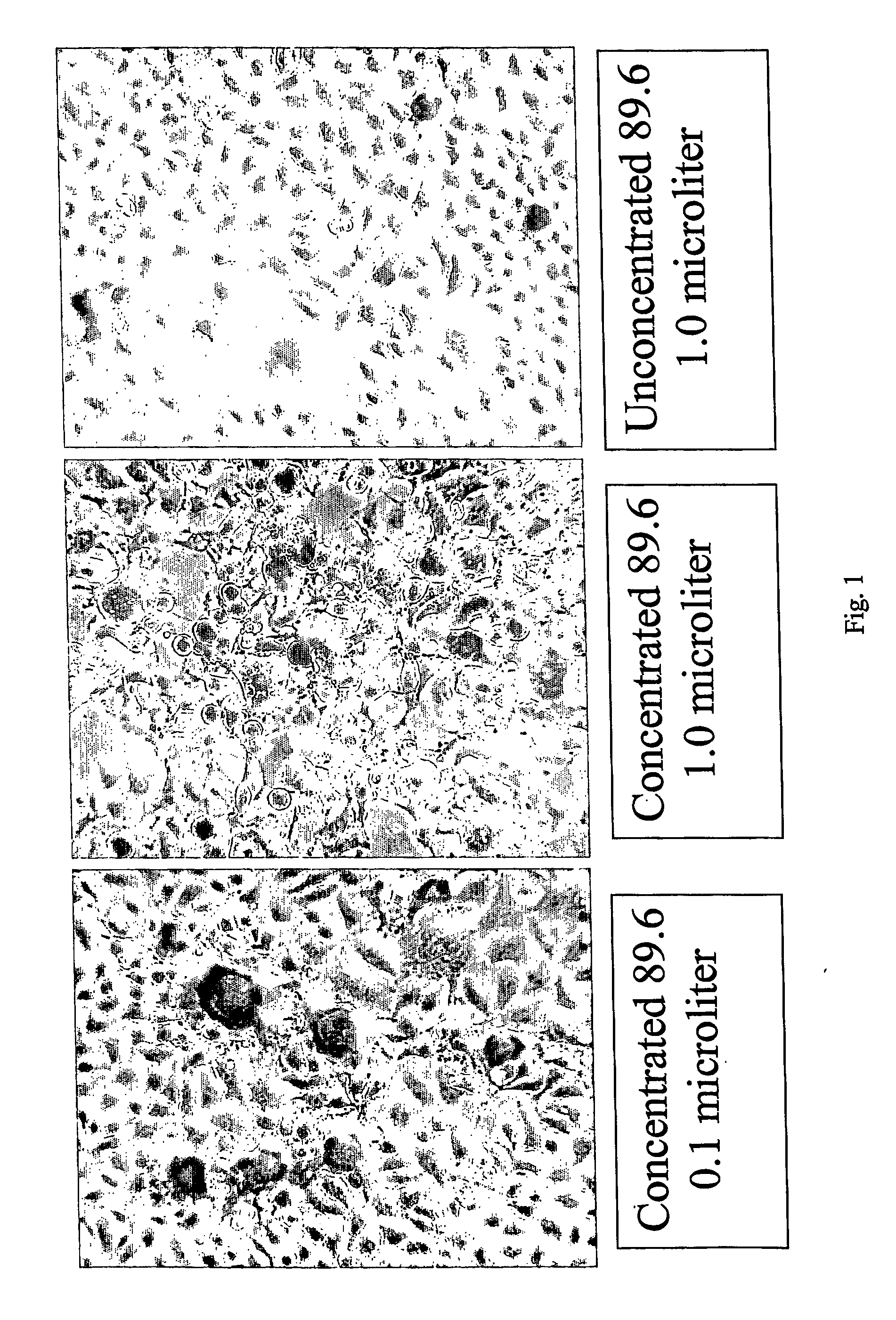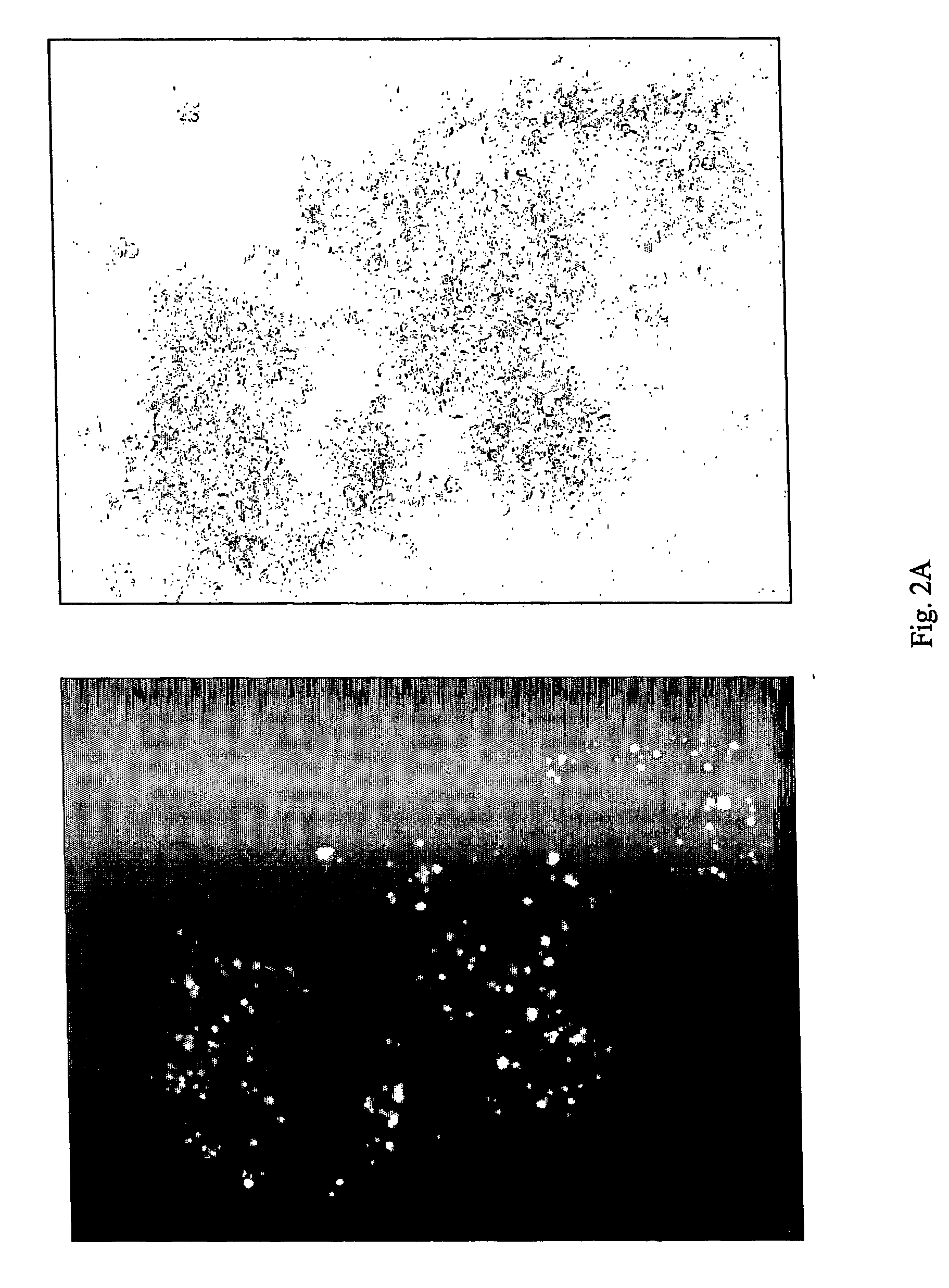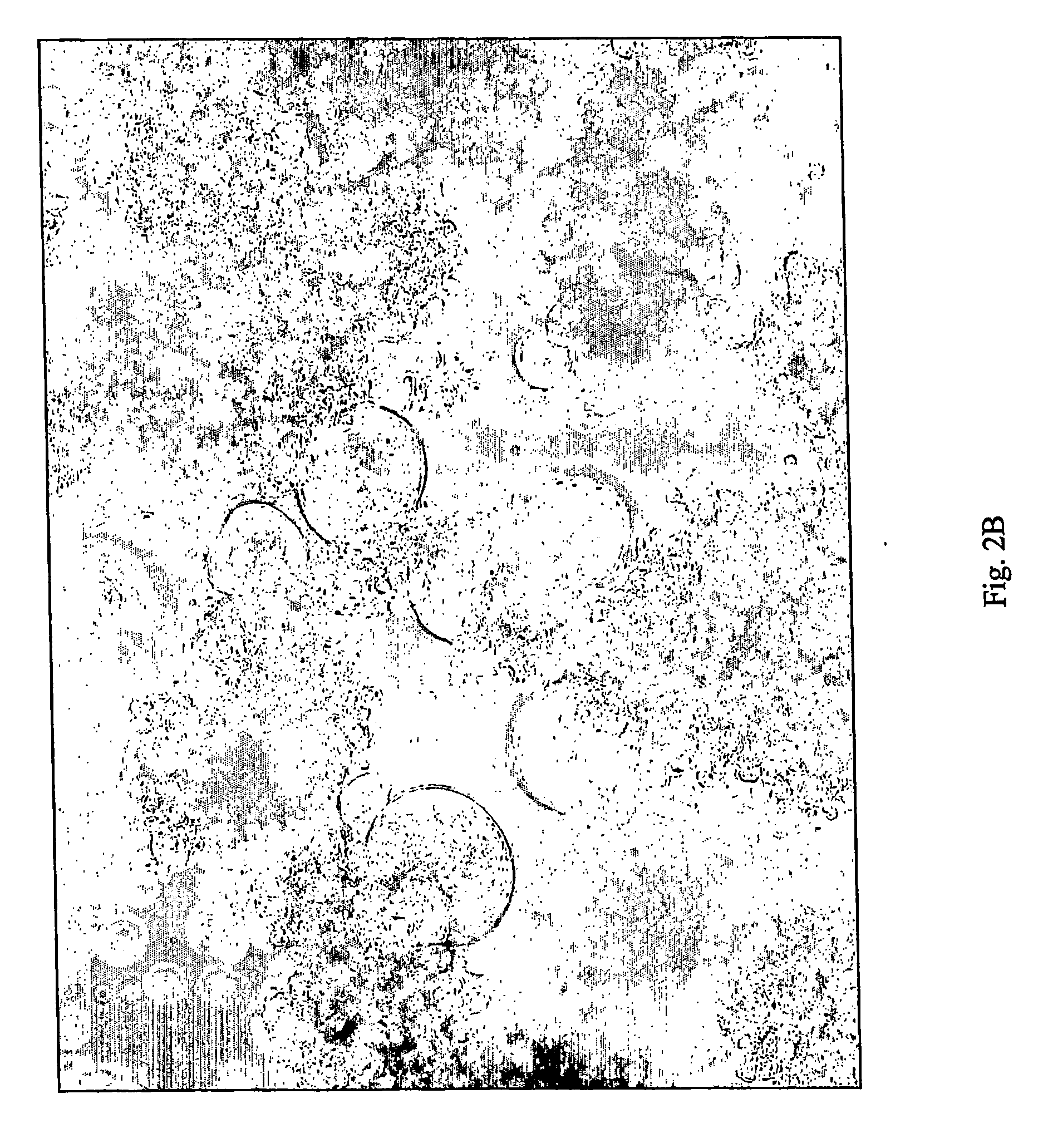Methods of treatment and diagnosis using modulators of virus-induced cellular gene sequences
a technology of cellular gene sequence and modulator, which is applied in the field of identification and use, can solve the problems of limited prior art identification, inability to develop effective vaccines, and prohibitive therapies, so as to reduce the expression of virus, reduce or prevent the expression of mrna, and reduce the biological activity
- Summary
- Abstract
- Description
- Claims
- Application Information
AI Technical Summary
Benefits of technology
Problems solved by technology
Method used
Image
Examples
example 1
HIV-Infected THP1 and MT-2 Cells are a Valid In Vivo Model System for HIV Replication
[0288] The HIV-1 strain used in the model system was the 89.6 strain. This is a dual tropic (X4 / R5) HIV strain, meaning that it can infect cells utilizing CD4 and either the CXCR4 or the CCR5 co-receptor. Thus, both T cells (e.g., MT-2) and macrophages (e.g., THP-1) are susceptible to infection by the same virus strain. HIV-1 89.6 was originally provided by the investigator who isolated and characterized it, Dr Ronald Collman (Collman et al, J. Virology 66:7517, 1992). Applicant's expanded the virus by culture in PBMC, and concentrated it for use in the inventive system as described in EXAMPLE 2, herein below.
[0289] HIV-infected THP-1 and MT-2 cells. The cell lines selected for use herein include the monocyte line THP-1 and the T cell leukemia cell line MT-2.
[0290] The THP-1 cell line is CD4+, highly permissive for HIV infection, and has been used by numerous investigators for studying various as...
example 2
Nucleic Acid Microarray Technology was Used for Gene Expression Profiling of HIV-Infected THP-1 Cells to Identify Cellular Genes Whose Expression is Regulated by HIV
[0297] Nucleic Acid Microarray Data Analysis. Cellular genes involved in HIV-1 replication were identified by using DNA microarrays to examine the differential gene expression profiles of THP-1 cells before and after HIV-infection.
[0298] For RNA isolation and fluorescent labeling, two RNA probe samples from THP-1 cells, independently infected with KSHV, and two independent uninfected RNA probe samples were prepared. Briefly, THP1 monocytes infected with HIV isolate MN or with 89.6 were harvested at 2, 4, 6, 8, 10, and 12 hours post infection (PI). Uninfected cells were harvested in parallel.
[0299] Generally, RNA was isolated using the RNeasy™ RNA isolation kit (QIAGEN Inc., Valencia, Calif.). After DNase treatment and another round of RNeasy purification, labeled cDNA was prepared as described previously (see Salunga ...
example 3
Target Validation; Genes Necessary for Virally-Induced Morphological Changes in HIV-Infected THP-1 and MT-2 Cells were Identified / Validated Using Antisense PMOs
[0306] Antisense Phosphorodiamidate Morpholino Oligomers (PMOs). PMOs (see, e.g., Summerton, et al., Antisense Nucleic Acid Drug Dev. 7:63-70, 1997; and Summerton & Weller, Antisense Nucleic Acid Drug Dev. 7:187-95, 1997) are a class of antisense drugs developed for treating various diseases, including cancer. For example, Arora et al. (J. Pharmaceutical Sciences 91:1009-1018, 2002) demonstrated that oral administration of c-myc-specific and CYP3A2-specific PMOs inhibited c-myc and CYP3A2 gene expression, respectively, in rat liver by an antisense mechanism of action. Likewise, Devi G. R. (Current Opinion in Molecular Therapeutics 4:138-148, 2002) discusses treatment of prostate cancer with various PMO therapeutic agents). See also recent reviews by Milhavet et al., and by Gitlin et al (Milhavet et al Pharmacological Reviews...
PUM
| Property | Measurement | Unit |
|---|---|---|
| Therapeutic | aaaaa | aaaaa |
Abstract
Description
Claims
Application Information
 Login to View More
Login to View More - R&D
- Intellectual Property
- Life Sciences
- Materials
- Tech Scout
- Unparalleled Data Quality
- Higher Quality Content
- 60% Fewer Hallucinations
Browse by: Latest US Patents, China's latest patents, Technical Efficacy Thesaurus, Application Domain, Technology Topic, Popular Technical Reports.
© 2025 PatSnap. All rights reserved.Legal|Privacy policy|Modern Slavery Act Transparency Statement|Sitemap|About US| Contact US: help@patsnap.com



